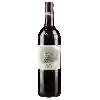
Winery Bertrand de TavernayBordeaux
This wine generally goes well with poultry, beef or veal.
Food and wine pairings with Bordeaux
Pairings that work perfectly with Bordeaux
Original food and wine pairings with Bordeaux
The Bordeaux of Winery Bertrand de Tavernay matches generally quite well with dishes of beef, veal or game (deer, venison) such as recipes of barbecued prime rib with coarse salt, blanquette of veal in pickle sauce or rabbit with chorizo.
Details and technical informations about Winery Bertrand de Tavernay's Bordeaux.
Discover the grape variety: Baco
Baco blanc is a grape variety that originated in France (Landes). It is a variety resulting from a cross of the same species (interspecific hybridization). It produces a variety of grape specially used for wine making. It is rare to find this grape to eat on our tables. It should be noted that this grape variety can also be used for the elaboration of eaux de vie. This variety of vine is characterized by bunches of medium to large size, and grapes of medium to large size. Baco blanc is found in the vineyards of Languedoc & Roussillon.
Informations about the Winery Bertrand de Tavernay
The Winery Bertrand de Tavernay is one of of the world's great estates. It offers 59 wines for sale in the of Bordeaux to come and discover on site or to buy online.
The wine region of Bordeaux
Bordeaux, in southwestern France, is one of the most famous, prestigious and prolific wine regions in the world. The majority of Bordeaux wines (nearly 90% of the production Volume) are the Dry, medium and Full-bodied red Bordeaux blends for which it is famous. The finest (and most expensive) are the wines of the great châteaux of Haut-Médoc and the right bank appellations of Saint-Émilion and Pomerol. The former focuses (at the highest level) on Cabernet Sauvignon, the latter on Merlot.
The word of the wine: Viscosity
Consistency of wine reminiscent of the tactile sensation of sugar syrup with varying degrees of fluidity, due to the alcohol and natural sugar in the grapes present in sweet wines. In excess, this sensation can make the wine pasty and heavy. To the eye, viscosity is referred to as tears.














